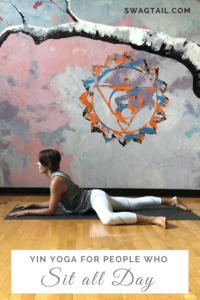
Long road trips or hours spent in any seated position can leave your body feeling tired and tight. Muscles in the hips get short and weak. Spinal discs compress. Plus you often get stiff in the shoulders and neck, too. That’s why I created this yin yoga sequence for people who sit all day. It offsets these unwanted physical issues with more balance, ease, and freedom in your entire being.
I know this to be true firsthand. Steve and I just returned from a month-long adventure in which we put 5,300 miles on the van. Since I get carsick on windy, mountain roads, I did 90% of the driving.
The highlights of the trip included fresh snowfall in the Grand Tetons, seeing moose in the Colorado Rockies, and endless miles of aspen changing color through the high-elevation wilderness.
If you’re like me, you’ll likely trade these magical moments for countless hours in the car.
But if roadtrips aren’t your thing, you likely still spend more time seated than you’d like—driving kids to practice, working at your computer, or waiting for a doctor’s appointment.
In any case, this yin yoga sequence for people who sit all day will combat the habituation of muscles in the seated position. It’s a practice I go back to again and again after long hours of driving. And, you too, just might enjoy the extra TLC given to the entire body via such postures. I hope you enjoy it as much as I do!
Photo Credit: Thanks to Vail Athletic Club for the beautiful space!
WHAT HAPPENS WHEN YOU SIT TOO MUCH?
You’ve probably heard that sitting is the new smoking with regards to negative health consequences. For example, studies show that people who sit a lot tend to have higher blood pressure levels and increased weight gain. You’re also at a greater risk for heart-related issues down the road.
You also realize that any habitual body movements directly impacts your connective tissue. This is especially true when you’re not moving and sitting a lot instead.
Here’s what happens in the body:
- Weakened Quadriceps and Gluteal muscles (from inactivity)
- Reduced core strength
- Shortened hip flexor muscles
- Compression of the spinal disks
- Rounding of the upper back and shoulders
- Strain in the neck and eyes (especially if staring at a computer screen or out a car window)
This yin yoga sequence for people who sit all day will counter these patterns. A more active hatha yoga sequence or vinyasa flow class can be used to build more strength and heat. And this sequence will elongate the tissues and create space in the body that is much-needed for your overall wellbeing.
Props you’ll Need for this Yoga Sequence
You can complete this entire sequence without any props. Yet you can grab the following to make yourself more comfortable during class if you’d like:
- A blanket (or thick towel)
- Two blocks
(1) CHILD’S POSE
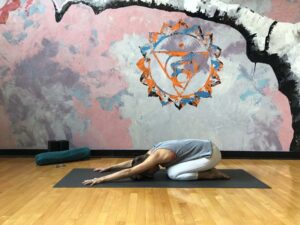
Purpose: Child’s pose is a stable posture that connects you instantly with the ground beneath you. It’s a pose that exposes the back of the heart and opens up space between each vertebra of the spine. And since this is a yin yoga sequence for people who sit all day, the practice is restorative in nature. Child’s pose gets you to tune inward right from the start.
Length: 2-5 minutes
Additional Notes:
- Place a rolled blanket in front of the ankle to lessen the degree of dorsiflexion.
- Use a bolster under the torso for more support, if desired.
- If child’s pose is not a resting pose, then a supine position in traditional savasana would work as well. Keep in mind the focus with this introductory posture is to breathe into the back side of the body. So, if the back is on the floor, focus on the sensations where the body does in fact meet the floor in this position. And, remind students in either position to breathe into the back of the heart.
(2) THREAD THE NEEDLE
Purpose: In a seated position, gravity tends to pull the body downward. Lengthening the side body in thread the needle gives you more room to breathe. It creates space between the ribs. It also opens the intercostal muscles and elongates the lats.
Length: 3-5 minutes each side
Additional Notes:
- You can take the first few rounds of breath in a simple side stretch from the child’s pose position.
- Students can then stay there, or weave the bottom arm under the top for a deeper stretch.
- Hold for a few cycles of breath in an extended child’s pose before moving right into the second side.
(3) CAT / COW
Purpose: When you teach yin yoga, you want to incorporate some gentle movement between the longer-held postures. That’s why the cat/cow sequence is third in this yin sequence. The goal is to mobilize the spine, hips, and wrists after the stationary poses above.
Length: Generate organic movements for 1-2 minutes.
Additional Notes:
- Start in table top to establish your baseline position.
- You can begin to cue with traditional flexion and extension of the spine in cat/cow.
- Students can also take spinal rolls or lateral bends or whatever organic movement seems right for their bodies in the moment. This could even mean incorporating the hips and wrists as well.
- Flip the direction of the palms or fingers to intensify a wrist stretch as well.
- Downward-facing dog is also a more active option here, too.
(4) LIZARD POSE
Purpose: Lizard is the yin variation of low lunge, or anjenayasana, in the yang tradition. No matter the name, this pose gets right into an area of the body that gets tight when seated for long periods of time—the hip flexors. Yes, the quads and psoas on the back leg elongate here. Then, you can also eccentrically contract the hamstrings on the front leg (an area that tends to get weak and short when seated, too).
Length: Hold the first (basic) version for 3 minutes. Stay, or add a twist for the remaining two minutes.
Additional Notes:
- For people who sit a lot, you can switch the position of the wrists to get a forearm stretch here. Instead of having the fingers point forward, externally rotate the shoulders and turn the fingers back toward the body.
- Place a block under the hands to make the posture easier.
- If students have a wrist injury, rest on the forearms instead. This can be done on a single block, multiple blocks, or even on the floor if flexibility allows.
(5) SWAN
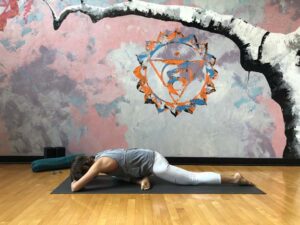 Purpose: This pose is commonly referred to as pigeon in active hatha style yoga classes, and it’s known for lengthening the external rotator muscles of the hip of the front leg. What are these, you might ask?
Purpose: This pose is commonly referred to as pigeon in active hatha style yoga classes, and it’s known for lengthening the external rotator muscles of the hip of the front leg. What are these, you might ask?
Mainly a group of six muscles that include the piriformis and quadratus femoris. However, the glutes, psoas, and sartorius also aid in external rotation. Targeting this region alleviates issues associated with sciatica. Plus, the hip flexors on the back leg elongate as well.
Length: 3-5 minutes
Additional Notes:
- Place a bolster, block, or blanket under the torso for more support, if desired.
- Rest the forehead on a block or stacked fists to give the neck some release as well.
- Even a stacked blanket can be placed under the back leg to intensify the stretch there.
To Transition:
Use an inbreath to bring the torso upright. Then, simply roll onto the front hip and extend both legs behind you. You’ll end up in a prone position.
(6) PRONE WITH WINDSHIELD WIPER LEGS
Purpose: When seated, your back is often in contact with the surface behind you. Or, at least, the back side of your body has to work really hard to keep you upright. In the prone position, however, it’s time to let all of that tension go. Notice what it takes to focus on the front line of the body instead. Welcome the contact of your front side of the body with the floor, and breathe into that connection. Also notice the support of the floor beneath you that keeps you balanced without effort.
Then, from this steady position, bend the knees and sway the shins side-to-side in a windshield wiper motion. This can alleviate any low back strain that occurs when seated .. or that might have accrued from the previously-held yin poses.
Length: 1-2 minutes
Additional Notes:
- Ideally, the neck is in a neutral position here. Stack one hand on top of the other, then place the forehead on the back of both hands. This will give students room to breathe.
- If that’s not comfortable, students can turn their head to one side. Just make sure you notify class of the halfway mark so they can switch the position of the head to the second side to remain as balanced as possible.
(7) HALF FROG
Purpose: There are numerous reasons for placing this pose next in the sequence. First, students are on their stomach already, so the transition into the next posture is simple and straightforward. (TIP: Seamless transitions help create a magical yoga experience for your students). Second, we want to elongate the front side of the body after hours in the seated position. Yes, the shoulders and entire front line can shorten with habitual poor posture.
The half frog variation here, often called tipsy frog, will offset those patterns. Plus, the abducted bent leg will open the inner groin. The bent elbows will melt the heart and soften tension between the shoulder-blades. And, the act of gravity can help create space in the upper spine and hip region simultaneously.
Length: 2 minutes
Additional Notes:
- Place a rolled blanket under the abdomen to make this a more accessible backbend.
- Stay with the forehead on the floor to make the hip-opening the emphasis of the posture.
- Or, you can extend the bent leg halfway through the time here to accentuate the stretch along the inner thigh.
(8) PRONE CHEST-OPENING STRETCH
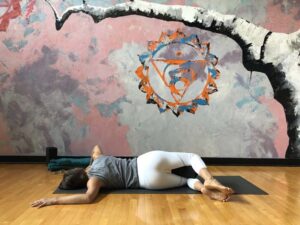 Purpose: When you’re in a car or in front of a computer screen, it’s common for the shoulders to round forward. This yin yoga sequence for people who sit all day offsets that closed-off habit. In fact, this prone chest opening stretch reverses that position entirely.
Purpose: When you’re in a car or in front of a computer screen, it’s common for the shoulders to round forward. This yin yoga sequence for people who sit all day offsets that closed-off habit. In fact, this prone chest opening stretch reverses that position entirely.
The chest muscles, deltoids, and internal rotator muscles of the shoulder all elongate here. And when roll on to your side, you also target the lateral line of the body. You can take it even further into a twist to also wring out the muscles around the spine as well. Lots of options and all with many benefits to open the heart.
Length: 1-2 minutes (with the left arm outstretched first)
Additional Notes:
- You can keep the left arm extended on the floor, at shoulder height, palm facing down.
- Bend the elbow 90-degrees to intensify the pec stretch.
- Support your upper body with your right hand as you roll on to your left side. This means you will also be twisting slightly to the right).
- Place a block or the rolled blanket between your bent-knees to create a supported twist in the pose (and intensify the front-body stretch even more).
(9) SAVASANA
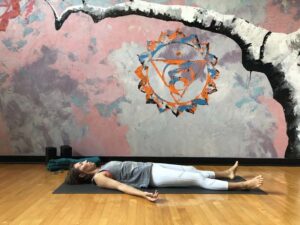 Purpose: Finally, you move from lying on the front side of your body to reclining on the back. The purpose here is to notice the contrast with these positions. Observe the space in the back line of the body. Check out the new sensations on the front line of the body as your ribs and torso can finally expand without constriction from the floor. Breathe deeply into the moment as you also notice how one side of the body might feel drastically different from the other—front to back, or side-to-side.
Purpose: Finally, you move from lying on the front side of your body to reclining on the back. The purpose here is to notice the contrast with these positions. Observe the space in the back line of the body. Check out the new sensations on the front line of the body as your ribs and torso can finally expand without constriction from the floor. Breathe deeply into the moment as you also notice how one side of the body might feel drastically different from the other—front to back, or side-to-side.
Keep in mind that one of the main functions of yoga is to connect you with your true, spiritual nature as well as give you the ability to remain calm in the face of contrast.
Length: 1-2 minutes
Additional Notes: Bend the knees and place the feet on the floor to enjoy an easy resting position. This is great if you or your students have low back issues.
To Transition:
- Hug the knees into the chest and rock side-to-side.
- Rock to a seat. Or, roll over to one side and come to a seated position that way.
- Then, move back to table top position to get ready for the next portion of class.
(10) REPEAT STEPS 3-9
Purpose: In the previous postures, we started on the right side (for most of them). Now, it’s time to balance out the body on the second side. The postures you will repeat include:
- Cat/Cow (or organic movements to mobilize the spine and hips again)
- Lizard (left foot forward)
- Swan (left knee forward)
- Prone Rest (with optional windshield-wiper legs)
- Half Frog (left knee/leg out to the side)
- Chest Opener (right arm out to the side, twisting to the left)
Length: Use the same length of time for each pose that you did on the first side.
Additional Notes: Each side of the body is different, and each day is different. Try to get as close to the variation you chose on the first side. Better still, listen to your intuition and trust what your body needs in the new moments that arrive in each pose.
FINAL REST:
In a 60-minute yin yoga class, entering Savasana the second time around in this sequence will likely signal the end of your class. You can incorporate elements of your class theme or other inspirational words as you settle your students in to the final resting portion of your time together.
TEACHING A 90-MINUTE YIN YOGA CLASS?
If you have more time for your scheduled class, I suggest you add these poses to your yin sequence for people who drive or sit all day. This includes:
(11) Supta Baddha Konasana
Purpose: The purpose here is to open the adductors simultaneously (as they were addressed indenpendtly with tipsy frog. Plus, motion from a seated position mostly addressed the sagittal plan and you want to move the body in the lateral plane as well.
Length: Hold 3-10 minutes
Additional Notes: if you’re familiar with restorative yoga, you know that props can be used to support the posture. If you want blocks or a blanket in SBK here, use them. The goal is to be comfortable as you restructure the fascia.
(12) SPINAL TWIST
Purpose: Use this twsting motion to wring out any last tension in the low back. Stretching the arms out to the side can also open the front of the chest, which gets tight from moving forward when seated (like driving or typing).
Length: 3-5 minutes each side
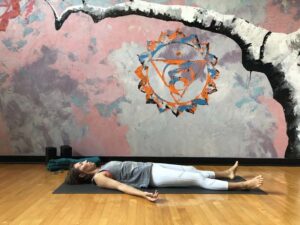 (13) FINAL REST
(13) FINAL REST
Purpose: Take your final savasana in a longer yin class in the traditional supine position. This will give you one last chance to observe the changes that happen in the body from the previous postures. And, it gives students a chance once again to breathe into the back of the heart—as well as the spaciousness around the front of the chest. It’s in this space that students can set a new intention for the rest of their day.
Length: 5-10 minutes
Additional Notes: If space allows, legs up the wall pose (or viparita karani) is a nice way to reverse the blood flow in the body.
PUTTING IT TOGETHER
Long hours in a seated position can wreak havoc on the shoulders, torso, spine, and hips. That’s why this yin yoga sequence for people who sit all day can offset those unwanted patterns. The end result is that you have more spaciousness in the heart and groin. You also gain clarity about what’s important in your life, and gain awareness of how to better carry yourself with confidence—even if more driving or sitting is in your foreseeable future.
Take Action Now
- Download this yin yoga sequence to use for yourself (and to share with your students) this week.
- Share your favorite poses that offset being seated for too long in the comments section below!
- Or, give me a shout out and let me know of the cool murals in your area! I travel often and would love to take pictures with art in your town!


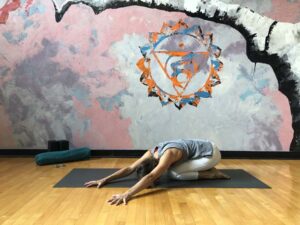
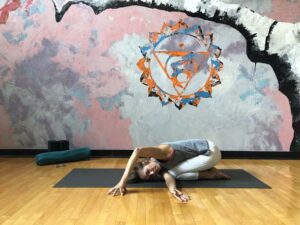
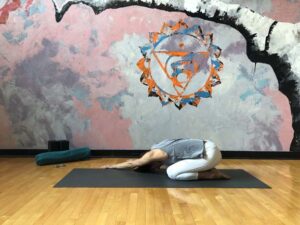
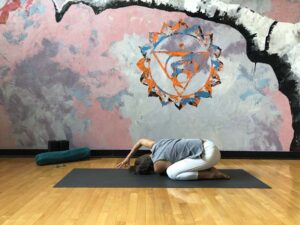
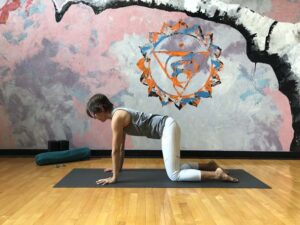
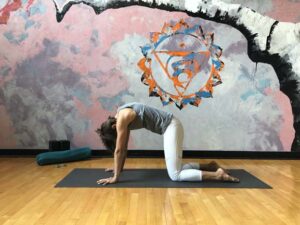
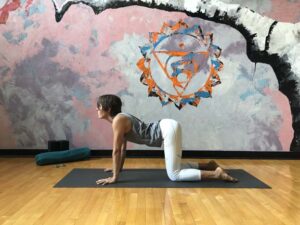
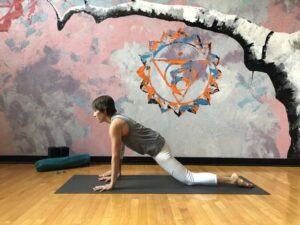
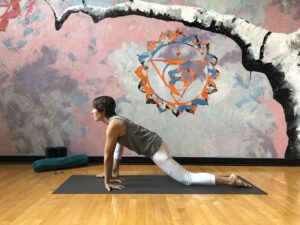
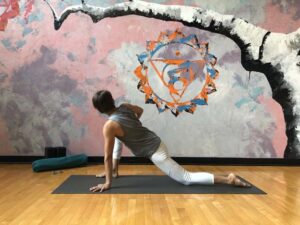
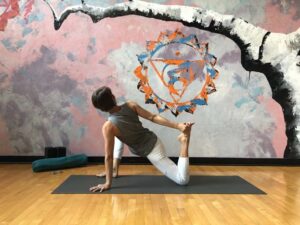
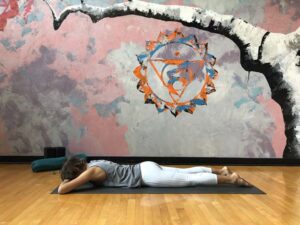
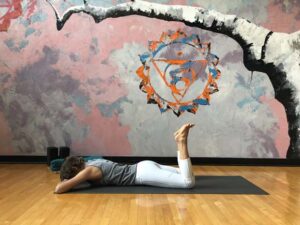
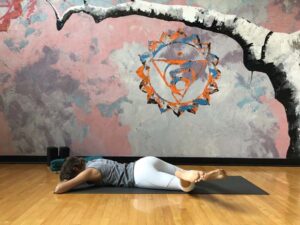
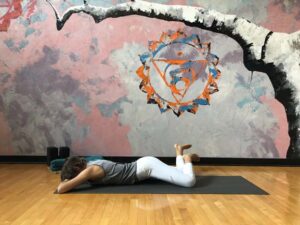
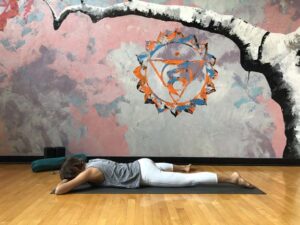
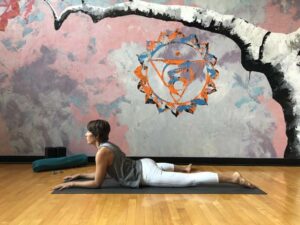
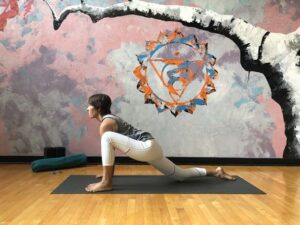
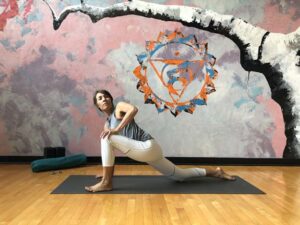
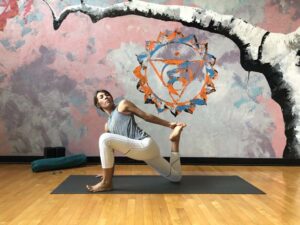
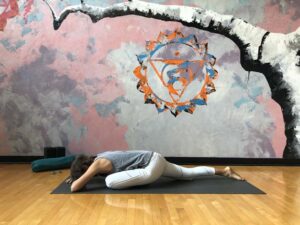
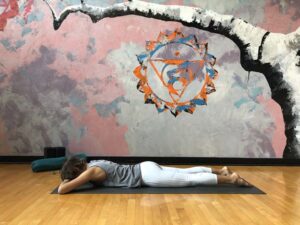
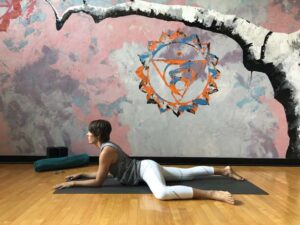
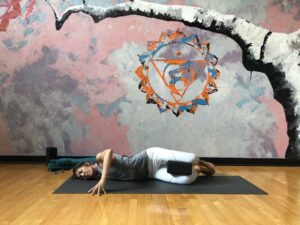
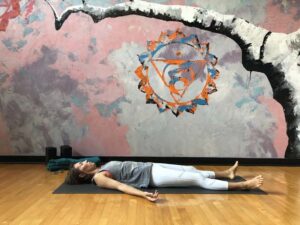
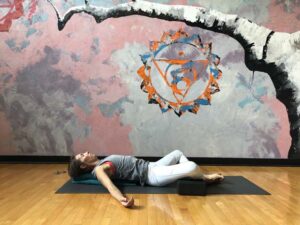
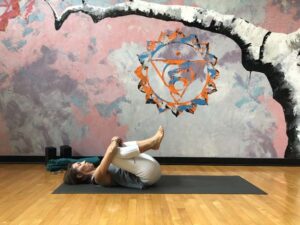
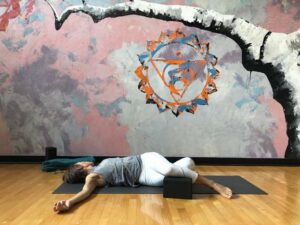
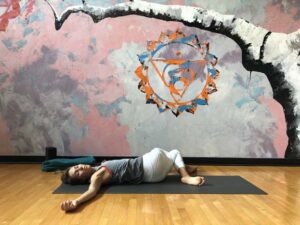

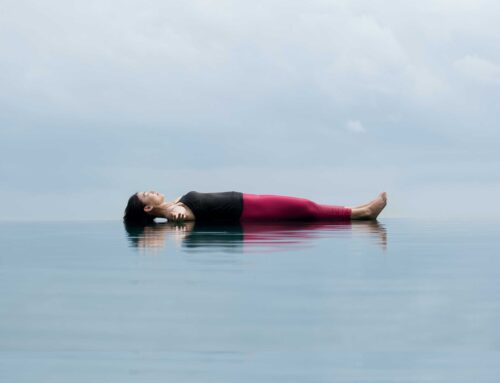

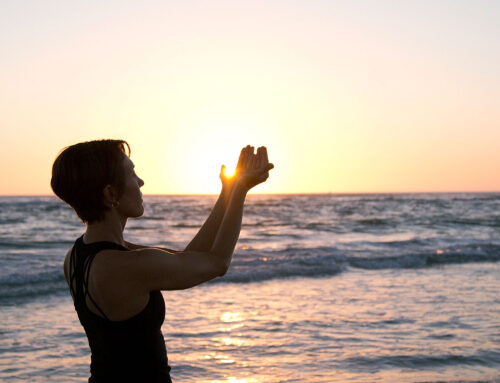
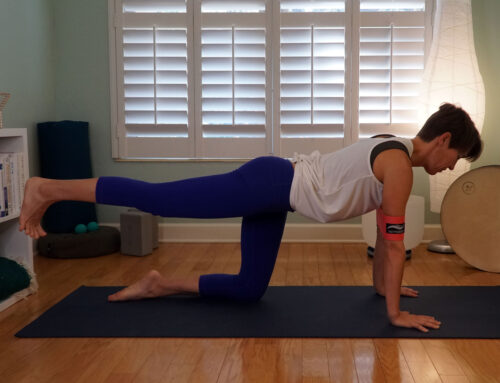
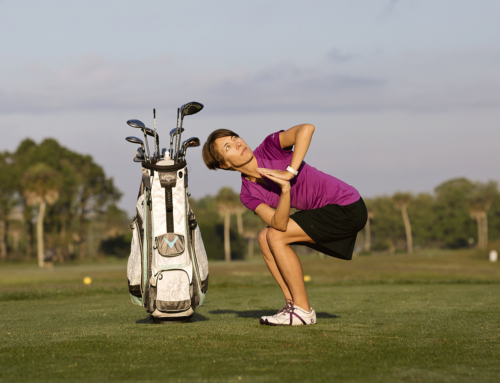
What wonderful content…thank you!
Thanks, Sandra. I’m so glad you like it!